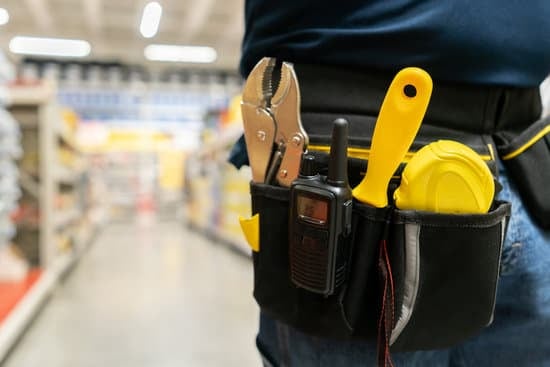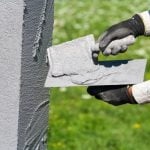Are you looking to make improvements to your home but don’t have the funds to do so? This article will provide you with valuable information on how to get free money for home improvements. Whether it’s repairs, renovations, or energy-efficient upgrades, there are various resources available to help homeowners with the costs of improving their homes.
Home improvements are essential for maintaining and increasing the value of your property. However, the financial burden of these projects can often be a barrier for many people. In this section, we will explore different avenues that homeowners can pursue to secure free money for their home improvement needs.
From government grants and non-profit organizations to crowdfunding and DIY projects, there are numerous options available to assist with funding home improvements. By understanding the importance of home improvements and knowing where to look for financial assistance, homeowners can take action and make the necessary enhancements to their homes without breaking the bank. So, let’s dive into the various ways you can access free money for your home improvements.
Researching Government Grants and Programs for Home Improvements
When it comes to making home improvements, the cost can often be a major deterrent. However, there are various government grants and programs available to assist homeowners with the financial burden of renovating or repairing their homes. By taking advantage of these resources, you can potentially receive free money for home improvements.
One option is the Home Improvement and Structural Alterations (HISA) program offered by the Department of Veterans Affairs (VA). This program provides financial assistance to qualified veterans for home modifications that are necessary for medical treatment or disability access. Additionally, the U.S. Department of Agriculture (USDA) offers the Rural Repair and Rehabilitation Loans and Grants program for low-income homeowners in rural areas.
Other resources to consider include state and local government grant programs specifically aimed at home improvements, as well as energy efficiency initiatives that provide funding for environmentally-friendly upgrades. By researching and applying for these government grants and programs, you can access free money to help enhance your living space without breaking the bank.
To make this process smoother, here’s a helpful list of government grants and programs for home improvements:
- Department of Veterans Affairs (VA) Home Improvement and Structural Alterations (HISA) program
- U.S. Department of Agriculture (USDA) Rural Repair and Rehabilitation Loans and Grants program
- State and local government grant programs for home improvements
- Energy efficiency initiatives offering funding for environmentally-friendly upgrades
By exploring these options, eligible homeowners can find valuable resources to support their home improvement projects.
Exploring Non-Profit Organizations That Offer Financial Assistance
Non-profit organizations can be a valuable resource for homeowners seeking financial assistance for home improvements. These organizations often have specific programs or funding available to help individuals and families make necessary repairs or upgrades to their homes. Here are some ways to explore non-profit organizations that offer financial assistance for home improvements.
Researching Local Non-Profit Organizations
Start by researching local non-profit organizations in your community that focus on housing, community development, or low-income assistance. Many of these organizations may have established programs or resources for homeowners in need of financial support for home improvements. Contact these organizations directly to inquire about any available assistance and eligibility requirements.
Connecting With National Non-Profit Associations
In addition to local non-profit organizations, there are also national associations and foundations that provide financial assistance for home renovations and repairs. These associations may have broader eligibility criteria and reach, making them a potential source of support for a wider range of homeowners. Take the time to research and connect with these national non-profit associations to learn about any available funding or programs.
Applying for Grants and Financial Support
Once you’ve identified non-profit organizations that offer financial assistance for home improvements, it’s important to carefully review their application process and requirements. Some organizations may offer grants or direct financial support, while others may provide access to low-interest loans or other resources. Be sure to thoroughly complete the application process and provide all required documentation in order to be considered for funding.
By exploring non-profit organizations that offer financial assistance, homeowners can take advantage of additional resources and support to achieve their home improvement goals. Whether it’s through local community-based programs or national associations, there are various opportunities available for individuals in need of financial assistance for essential home renovations.
Utilizing Rebates and Tax Credits for Home Improvements
When seeking free money for home improvements, utilizing rebates and tax credits can be a great way to offset the costs of renovation projects. Many government agencies and utility companies offer financial incentives to homeowners who make energy-efficient upgrades to their homes. These incentives can significantly reduce the out-of-pocket expenses associated with home improvement projects.
Researching Available Rebates and Tax Credits
Before embarking on any home improvement project, it’s important to research the available rebates and tax credits that may apply to your specific renovation. Many local, state, and federal programs offer financial incentives for energy-efficient upgrades such as installing solar panels, upgrading windows and doors, or improving insulation. Additionally, many utility companies offer rebates for making energy-saving improvements such as upgrading heating and cooling systems or installing smart thermostats.
Applying for Rebates and Tax Credits
Once you have identified the rebates and tax credits that apply to your planned home improvements, it’s crucial to follow the application process outlined by the respective agencies or organizations. Some programs may require pre-approval before starting the renovations, while others may require proof of purchase and installation before providing the financial incentives. It’s essential to carefully review all requirements and deadlines to ensure that you receive the maximum benefit.
Maximizing Your Savings
In order to maximize your savings through rebates and tax credits, it’s important to keep detailed records of all expenses related to your home improvement project. This includes receipts for materials purchased, invoices from contractors, and any other documentation required by the rebate or credit program. By staying organized and thorough in your record-keeping, you can ensure that you receive the full financial benefit available to you through these incentive programs.
Tips for Crowdfunding and Fundraising for Home Renovations
Crowdfunding and fundraising can be effective ways to get free money for home improvements. Whether you are looking to renovate your kitchen, update your bathroom, or make energy-efficient upgrades, there are several methods you can utilize to raise funds for your home improvement projects.
One way to crowdfund for your home renovations is by using online platforms such as GoFundMe, Kickstarter, or Indiegogo. These platforms allow you to create a campaign explaining your home improvement needs and share it with friends, family, and even strangers who may be interested in supporting your project. You can offer incentives for different donation levels, such as personalized thank-you notes or a mention in a social media post about the renovation.
Another option is to organize local fundraising events such as yard sales, bake sales, or community raffles. Getting the support of your neighbors and local community can help you raise the necessary funds for your home improvements. You can also reach out to local businesses and ask for donations or sponsorships for your project in exchange for advertising their services during the renovation process.
Lastly, consider reaching out to non-profit organizations that specialize in providing financial assistance for home repairs and renovations. Many non-profits have programs specifically designed to help homeowners with limited income cover the costs of essential home improvements. Research organizations in your area that may be able to provide grants or low-interest loans for your specific renovation needs.
| Method | Description |
|---|---|
| Online Crowdfunding Platforms | Create a campaign on platforms like GoFundMe and Kickstarter to reach a wide audience and offer incentives for donations. |
| Local Fundraising Events | Organize yard sales, bake sales, or raffles in your community to raise funds for your home renovations. |
| Non-Profit Organizations | Research and reach out to non-profits that offer financial assistance specifically for home improvements. |
Leveraging Low-Income Assistance Programs for Home Repairs
Low-income assistance programs can be a valuable resource for homeowners in need of financial support for home repairs. These programs are designed to provide assistance to low-income individuals or families who may not have the means to afford necessary home improvements. Here are some options to consider:
- HUD’s Home Repair Grants: The U.S. Department of Housing and Urban Development (HUD) offers grants that can help low-income homeowners with home repairs. These grants are typically provided through local government agencies and non-profit organizations.
- USDA Rural Development Loans and Grants: The U.S. Department of Agriculture (USDA) provides loans and grants to low-income homeowners in rural areas for home repairs and improvements. These funds can be used for a variety of projects, including making a home more accessible for individuals with disabilities.
- Weatherization Assistance Program: This program, funded by the U.S. Department of Energy, helps low-income households improve the energy efficiency of their homes. Through this program, eligible homeowners can receive free weatherization services, such as insulation installation and heating system upgrades.
These are just a few examples of the many low-income assistance programs available to homeowners in need. It’s important to research and reach out to local government agencies, non-profit organizations, and community service groups to learn about potential opportunities for financial support.
Overall, leveraging low-income assistance programs can provide much-needed relief for homeowners facing costly repairs or improvements. By taking the time to explore these options, individuals and families can find the support they need to maintain safe and comfortable living environments without putting additional strain on their finances.
Utilizing Energy Efficiency Programs for Financial Support
Energy efficiency programs offer financial support and incentives to homeowners who make energy-efficient improvements to their homes. These programs are designed to help individuals reduce their energy consumption, lower their utility bills, and make their homes more environmentally friendly. By taking advantage of these programs, homeowners can not only save money on their monthly expenses but also receive financial assistance for their home improvement projects.
One way to access free money for home improvements through energy efficiency programs is by participating in utility-sponsored rebate programs. Many utility companies offer rebates for installing energy-efficient appliances, upgrading insulation, replacing windows, or making other qualifying home improvements. These rebates can significantly offset the cost of these upgrades and provide a valuable source of free money for homeowners looking to improve the energy efficiency of their homes.
Another avenue for financial support is through state and federal incentive programs aimed at promoting energy efficiency. These programs may offer tax credits or other forms of financial assistance for making eligible energy-saving upgrades to residential properties. By researching and understanding the specific requirements and benefits of these incentive programs, homeowners can identify opportunities to receive free money for their home improvement projects while also contributing to a greener environment.
In addition to providing financial support, energy efficiency programs often offer valuable resources and guidance on how to maximize the impact of home improvements. By taking advantage of these resources, homeowners can make informed decisions about which upgrades will have the greatest impact on their energy usage and overall comfort. Overall, utilizing energy efficiency programs is a practical and effective way to secure free money for home improvements while reducing environmental impact.
| Energy Efficiency Programs | Financial Support |
|---|---|
| Utility-Sponsored Rebate Programs | Offset the cost of energy-efficient upgrades |
| State and Federal Incentive Programs | Tax credits or other forms of financial assistance |
| Guidance and Resources | Informed decision-making for maximum impact |
DIY Home Improvement Projects to Save Money
One way to save money on home improvements is by taking on do-it-yourself (DIY) projects. Many home improvement tasks can be completed without the need to hire a professional, which can result in significant cost savings. DIY projects not only help you save money, but they also allow you to take pride in the work you’ve accomplished and personalize your home according to your taste and needs.
There are a variety of DIY home improvement projects that can save you money, including minor repairs, painting, installing new fixtures, and updating furniture with a fresh coat of paint or new hardware. These projects not only enhance the appearance of your home but also increase its value without breaking the bank. Additionally, by doing the work yourself, you have more control over the budget and timeline for your home improvements.
In order to successfully tackle DIY home improvement projects, it’s important to educate yourself on proper techniques and safety measures. There are numerous resources available online and at local hardware stores that provide step-by-step instructions for various projects.
It’s essential to have the right tools and materials before starting any project, as this will ensure that the job is done correctly and prevent any costly mistakes. By taking on DIY projects, homeowners can significantly reduce their expenses and achieve the improvements they desire without having to rely solely on outside financial assistance such as grants or loans for their home renovations.
Conclusion
In conclusion, securing free money for home improvements may require some research and effort, but the potential benefits are significant. By taking advantage of government grants, non-profit organizations, rebates, tax credits, and energy efficiency programs, homeowners can offset the costs of renovations and repairs. Additionally, exploring low-income assistance programs and DIY projects can further contribute to saving money on home improvement expenses.
When researching government grants and programs for home improvements, it’s essential to familiarize oneself with the eligibility criteria and application process. Non-profit organizations can also be a valuable resource for financial assistance, so individuals should reach out to these organizations to inquire about available support. Furthermore, homeowners should consider leveraging energy efficiency programs and tax credits to make their home improvements more affordable.
Finally, for those who are proactive and willing to put in the effort, crowdfunding and fundraising initiatives can provide an alternative source of funding for home renovations. Ultimately, by taking action and exploring these various avenues of financial support for home improvements, homeowners can turn their renovation dreams into reality without breaking the bank. With determination and thorough research, individuals can find ways to secure free money for their home improvement projects.
Frequently Asked Questions
Who Is Eligible for Government Home Improvement Grant in Wisconsin?
Eligibility for government home improvement grants in Wisconsin typically depends on income level, as these programs are often targeted towards low-income homeowners. Other factors such as the nature of the home repair needed and the homeowner’s ability to repay a loan may also be considered.
What Is the Ohio Housing Assistance Grant Program?
The Ohio Housing Assistance Grant Program is designed to help low- and moderate-income first-time homebuyers with down payment assistance and rehabilitation assistance. The program aims to increase homeownership opportunities for individuals and families in Ohio by providing financial support for housing needs.
What to Do When Your House Is Falling Apart and You Have No Money?
When your house is falling apart and you have no money, it can be a difficult situation to navigate. Start by seeking out community resources such as local nonprofit organizations or government agencies that offer home repair assistance programs.
You can also explore options for low-interest loans or negotiate with contractors for payment plans. It’s important to address safety hazards and prioritize essential repairs while seeking creative solutions for funding home improvements.

I’m thrilled to have you here as a part of the Remodeling Top community. This is where my journey as an architect and remodeling enthusiast intersects with your passion for transforming houses into dream homes.





